Shangri-La to Lijiang
Assalamualaikum
Day 3 - 17/8/2024 Sabtu
Today kita jalan-jalan sekitar Shangri-la

Guishan Hill Park, Shangri-la
Shangri-La is also known as 'the sun and moon in the heart' in Tibetan.
Songzanlin Monastery
Nak masuk sini kena bayar & naik bas. Kawasan dia sangat besar. Kami just tengok-tengok kat main entrance je la sebab lepas ni nak catch train ke Lijiang pulak.
Ni tempat beribadat untuk orang Buddha. Kami saja la nak masuk tengok-tengok dia tak bagi.
Depa pun dok pandang pelik la sebab kami ni bertudung. hahaa
Tibetan architecture contains Chinese and Indian influences, and reflects a deeply Buddhist approach. Tibetan people, has been highly influenced by Nepal, China and India.
Many of the houses and monasteries are typically built on elevated, sunny sites facing the south. Rocks, wood, cement and earth are the primary building materials.
Flat roofs are built to conserve heat and multiple windows are constructed to let in the sunlight. Due to frequent earthquakes, walls are usually sloped inward at 10 degrees.
The end of Dukezong Ancient Town is Moon Square and the hill to the east of the square is the famous Guishan Park in Shangri-la.
Built in the reign of emperor Kangxi, Guishan park is built against the mountain, which is the commanding height of the ancient city. The park consists of the Giant Prayer Wheel, Dafo Temple (Chaoyanglou), Red Army Long March Museum, Diqing History Museum, etc.
It is suitable to visit Dukezong Ancient Town all year round but summer is the best time. Take enough clothes to keep warm due to the great time differences between day and night.
Diqing Culture Expo Center
Waktu kami pergi ni musim hujan. So kena standby payung la pergi mana-mana
Muzium ni masuk free jer dalam Guishan Park
Kubur zaman purba
Sichuan dan Yunnan dipercayai sebagai kawasan pengeluar teh pertama di dunia. Rekod pertama penanaman teh menunjukkan bahawa teh telah ditanam di Gunung Mengding di Sichuan antara Chengdu dan Ya'an lebih awal daripada 65 SM. Ya'an telah menjadi hab perdagangan teh yang penting sehingga abad ke-20.
Dari sekitar seribu tahun yang lalu, Tea Horse Road menjadi penghubung perdagangan dari Yunnan ke Tibet dan ke China Tengah melalui Wilayah Sichuan. Dipercayai bahawa melalui rangkaian perdagangan inilah teh (biasanya bata teh) mula-mula tersebar di seluruh China dan Asia dari asalnya di daerah Pu'er di Yunnan.
Laluan itu mendapat nama kerana perdagangan iaitu pertukaran kuda Tibet untuk teh Cina, amalan ini adalah sejak dinasti Song, ketika kuda tegap itu penting bagi China untuk melawan nomad yang berperang di utara.
The Tea Horse Road or Chamadao now generally referred to as the Ancient Tea Horse Road or Chamagudao was a network of caravan paths winding through the mountains of Sichuan, Yunnan and Tibet in Southwest China. This was also a tea trade route. It is also sometimes referred to as the "Southern Silk Road" or "Southwest Silk Road.
There are numerous surviving archaeological and monumental elements, including trails, bridges, way stations, market towns, palaces, staging posts, shrines and temples along the route.
"Ancient Tea Horse Road" is a historical concept with a specific meaning. It refers to a major traffic road formed by the exchange of tea and horses between Han and Tibet from the Tang and Song Dynasties to the Republic of China.
The Yunnan-Tibet Tea Horse Road was formed in the late sixth century. It started from Yiwu and Pu'er in Xishuangbanna, the main tea producing area of Yunnan, and entered Tibet through today's Dali Bai Autonomous Prefecture, Lijiang City and Shangri-La, and went directly to Lhasa.
Some were also re-exported from Tibet to India and Nepal, which was an important trade route between ancient China and South Asia.
Giant Prayer Wheel:
The giant prayer wheel in Shangrila is reputed as the largest one in the world for its 21 meters in height and 60 tonnes in weight. Because of its size and weight, the prayer wheel is to be spun by multiple people.
It’s a must-see attraction of Shangrila tour.
The body is made of pure copper and gold-plated. On the upper end of the tube wall, there are four major Bodhisattvas, namely Manjusri, Puxian, Guanyin and Jizo, and the eight treasures of the Buddhist family are engraved on the bottom.
In the picture, there are also 1.24 million sutras, mantras and mantras, and 16 tons of various Buddha treasures.
There is a circle of handrails under the prayer wheel, which is used by people to push the prayer wheel. To turn such a huge scripture cylinder requires everyone to work hard at the same time. Each turn in the same direction is equivalent to 1.24 million times of the Buddha’s name. After three turns, you can eliminate disasters and pray for good luck.
Nak naik atas ni boleh tahan semput jugak sis! hahaaa..
Lebih kurang 100 anak tangga yang perlu didaki
panoramic view of Sun and Moon City
Shangri-la is about 3300 meters above sea level, and belongs to plateau humid climate. The climate changes little among the four seasons, but the temperature varies greatly between daytime and night. The temperature can be more than 30℃ on sunny days. However, in the morning and evening, people may feel as cold as winter.
The most appealing feeling in Shangri-La is its spiritual water and mountains. It is located at the area of Parallel of Three Rivers - Nu River, Jinsha River and Lancang River and with many snow-capped peaks rising over the plateau, including Meili Snow Mountain, Baima Snow Mountain, Haba Snow Mountain.
There are 13 ethnic groups living harmoniously on this land and the main group is Tibetan. In Shangri-La, you’ll not only feast your eyes with breathtaking paradise-like scenery, but also feel diverse Tibetan cultures and its profound Buddhism.
Time to catch train from Shangri-la to Lijiang.
Harga tiket train Rm49 sehala & perjalanan mengambil masa lebih kurang sejam 49 minit.
The prayer wheel outside train station.
Kalau tengok reka bentuk bangunan kat sini memang mengikut Tibetan Architecture inspired by Potala Palace, Lhasa. Ianya mempunyai tapak yang lebar untuk menahan gempa bumi yang terjadi di kawasan tanah tinggi.
Warna dia pun semua sama red brick & white.
 |
| peach apple |
Sampai dah di Lijiang
High speed bullet train
Naik Didi dari railway station untuk check in hotel di Lijiang
Mencari stok ubat batuk
Ubat AMS
Korang boleh cari ubat ni dekat farmasi untuk mengelakkan terkena Altitude Mountain Sickness masa naik Jade Dragon Snow Mountain nanti.
Lapar!!
Layan steambot dulu
Terasa penyesalan bila tergigit sichuan pepper! Dia rasa pedas & kebas lidah oiii!
Kalau nak cari Halal food kena cari simbol bulat hijau ni
Jalan-jalan dalam Lijiang Old town beli souvenir untuk diri sendiri
Lepas dah beli souvenier, kami pun bergerak ke lokasi nak cari kedai sewa baju traditional orang Yunnan











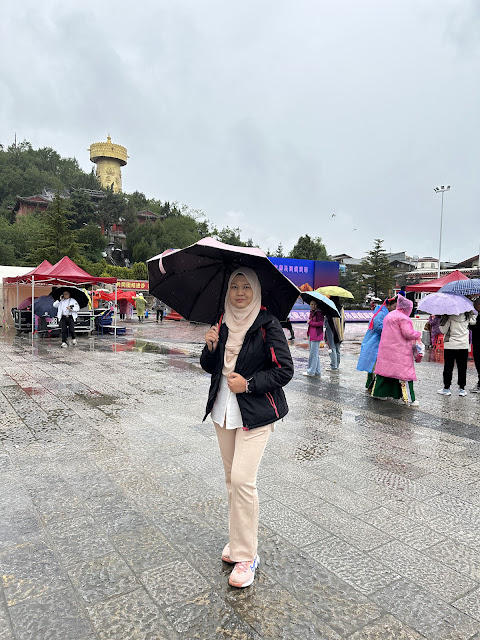
















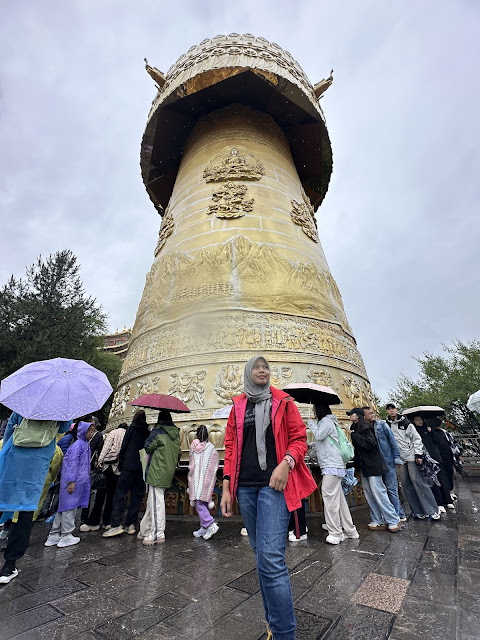



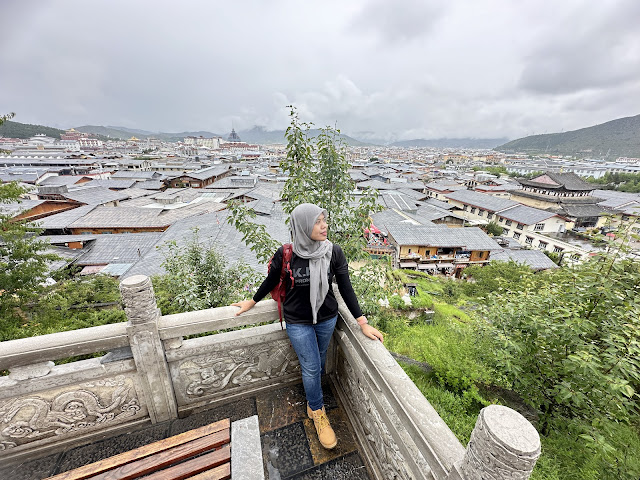

















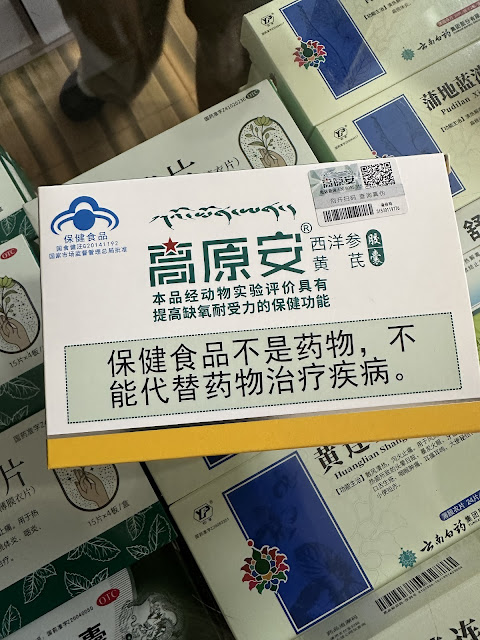




















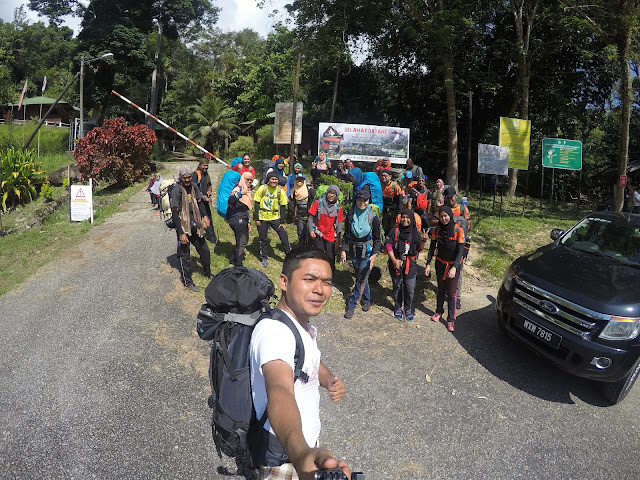
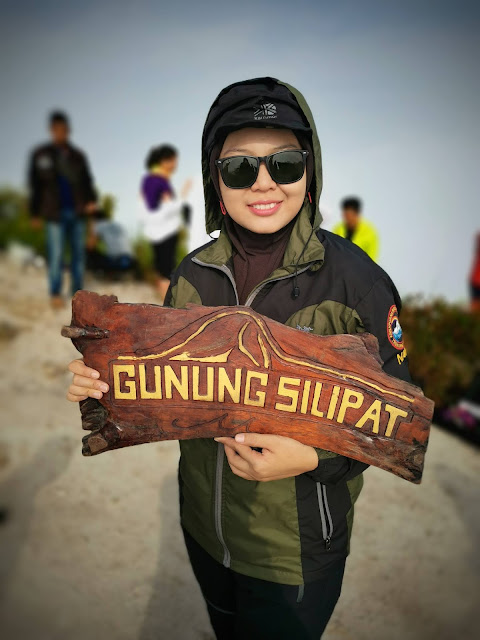






Wow. Ada lagi org tulis blog. Thanks for sharing ❤️
ReplyDeleteu r welcome. hahaa ade jer kita simpan kat sni travelog senang nak buat rujukan nanti.
DeleteHi, ingat lagi tak nama restaurant halal ni? banyak tak restoran halal?
ReplyDeleteAlamak tak ingat pulak tapi restoran halal banyak dekat bandar lijiang cuma kena cari skit lah yang ada tanda hijau tu. Kat Shangrila tak banyak
Delete